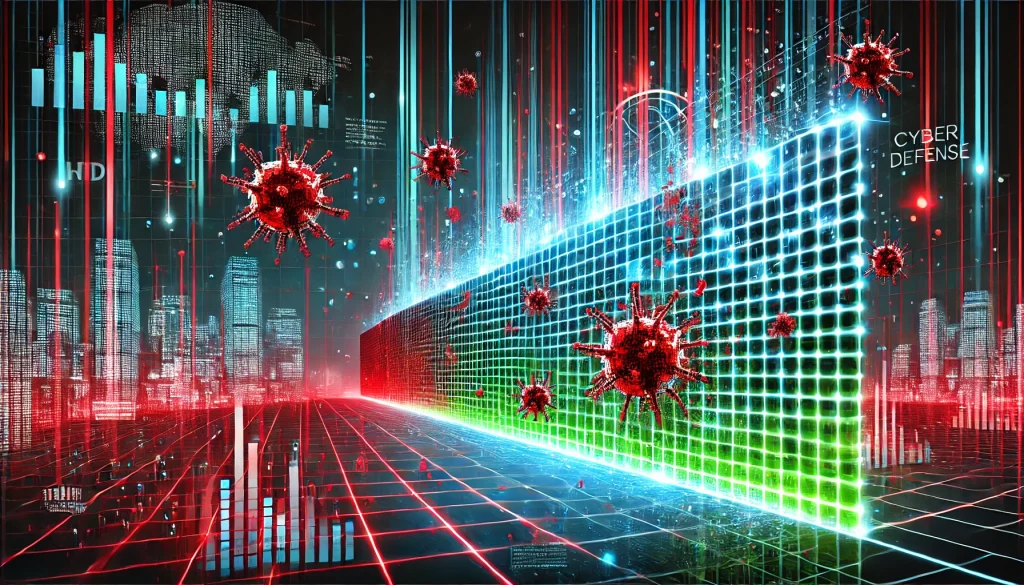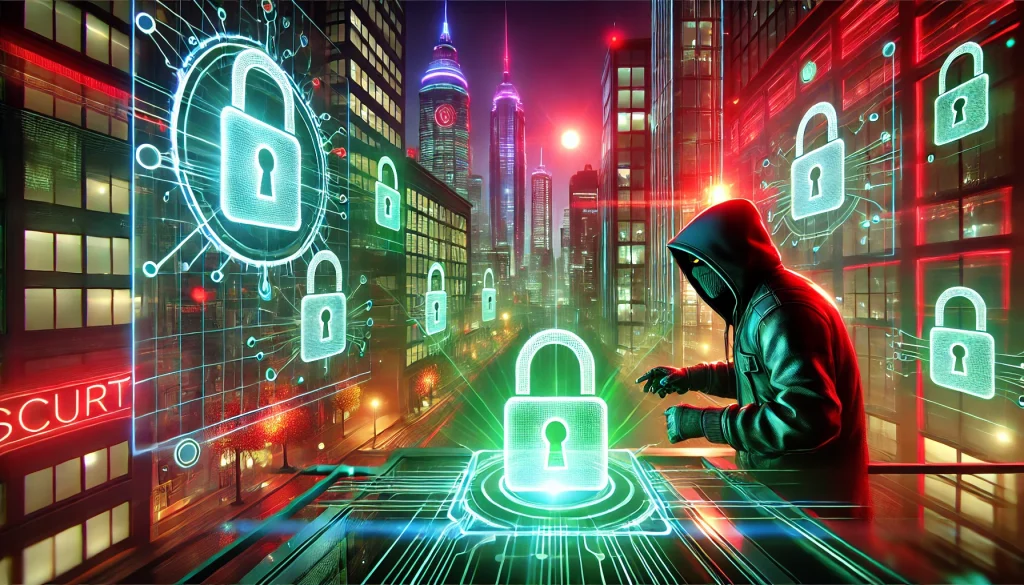
The landscape of cybersecurity threats is continually evolving, and the need to stay updated has never been more critical. With each passing month, organizations face more sophisticated attacks that target sensitive data and disrupt operations. In September 2024, the surge in global cyberattacks highlights the increasing importance of understanding these threats and being prepared to counter them. This month, particular attention is on emerging vulnerabilities in Internet of Things (IoT) devices, malware innovations, and the growing danger of distributed denial-of-service (DDoS) attacks.
As businesses and individuals alike become more dependent on digital infrastructure, the need to prioritize cybersecurity has never been more pressing. The dynamic nature of these threats means that yesterday’s defenses may no longer suffice, making real-time awareness a key component in safeguarding digital assets.
Recent Developments in Cybersecurity Threats (September 2024)

The cybersecurity threat landscape has continued to evolve in 2024, bringing new challenges for businesses and governments worldwide. Among the top concerns this month are advanced malware attacks, IoT vulnerabilities, and the resurgence of DDoS attacks targeting critical infrastructure.
Updates in Malware Trends
Malware has long been a core component of cyberattacks, but this September, we’re seeing a shift towards more sophisticated malware techniques designed to evade detection. One of the key changes is the development of malware that utilizes artificial intelligence (AI) to learn and adapt in real-time. These self-learning malware types can modify their behavior based on the system they infiltrate, making them harder to detect and eradicate.
In addition, ransomware, a subset of malware, continues to plague organizations. High-profile attacks are targeting healthcare institutions and governmental agencies, where attackers know the downtime from a ransomware incident could have catastrophic effects. The integration of deepfake technology with phishing and malware schemes is another concerning trend. Cybercriminals are now using fake AI-generated content to trick individuals into downloading malware, further complicating the efforts to detect these attacks.
| New Malware Trends | Effect on Businesses |
|---|---|
| AI-powered Malware | Harder to detect, adapts to defenses in real-time |
| Ransomware with Deepfakes | Increased phishing attacks, more personalized threats |
| Polymorphic Malware Variants | Frequently changing malware to bypass traditional security |
The Expanding Threat of IoT Vulnerabilities
The growth of IoT devices has transformed industries, enhancing operational efficiency and connectivity. However, this explosion in IoT adoption has introduced a new and dangerous attack vector. IoT devices are often left with minimal security protocols, making them an easy target for hackers. In September 2024, IoT-related cyberattacks have increased, with hackers exploiting vulnerabilities in connected devices like cameras, smart home systems, and even medical equipment.
Many IoT devices are part of critical infrastructure, from manufacturing systems to transportation networks. The risk is especially pronounced when these devices are not updated regularly, leaving them exposed to known vulnerabilities. These attacks can also serve as entry points for larger coordinated cyberattacks, such as DDoS attacks or malware deployment across entire networks.
The need to establish stricter security standards for IoT manufacturers and adopt more robust patch management systems is urgent. As the number of connected devices increases, so too does the potential for cybercrime, and security must keep pace with innovation.
DDoS Attacks: A Resurgence
Distributed Denial of Service (DDoS) attacks have seen a resurgence in 2024, as attackers find new methods to overwhelm servers with traffic, rendering them inoperable. Recent incidents have targeted global financial institutions, critical healthcare systems, and cloud infrastructure providers, leaving a trail of disruption. These attacks can last for days, severely impacting a company’s ability to serve its customers and maintain operations.
Notably, September 2024 has witnessed a marked increase in the volume and intensity of these DDoS attacks, with some attackers employing “botnets” composed of IoT devices to amplify the scale of the assault. This combination of IoT vulnerabilities and DDoS strategies presents a severe risk to any organization that depends on constant uptime for its services. As a countermeasure, companies are turning towards more advanced DDoS mitigation strategies, such as AI-driven traffic analysis tools and decentralized network structures.
Effects on Global Cybersecurity

The rise of these cyberthreats has a ripple effect across industries, economies, and even geopolitical relations. With cybercriminals constantly developing new techniques, businesses must invest heavily in updated cybersecurity protocols, personnel training, and advanced defensive tools to stay ahead. Governments, too, are stepping in, introducing new regulations and incentives to encourage stronger cyber defenses.
The collaboration between public and private sectors is growing, as seen in recent global cybersecurity summits aimed at sharing intelligence and defensive strategies. Nonetheless, the global economic impact of cybercrime is staggering. In 2024 alone, the projected cost of cyberattacks is expected to exceed $10 trillion. This figure reflects both the direct damage from breaches and the longer-term costs related to lost productivity, regulatory fines, and reputational damage.
Conclusion

Cybersecurity threats are evolving at a rapid pace, making it essential for businesses, governments, and individuals to stay informed and adopt proactive security measures. As highlighted in September 2024, the integration of AI into malware, the vulnerabilities introduced by IoT devices, and the resurgence of DDoS attacks are reshaping the cybersecurity landscape. Staying ahead of these challenges requires not just advanced technology but a culture of vigilance, constant learning, and collaboration.
As we move forward, cybersecurity will only grow in importance. Organizations should prioritize regularly updating their systems, train employees on the latest threats, and use AI-driven tools to identify potential vulnerabilities before attackers exploit them. Furthermore, investing in IoT security and mitigating DDoS risks remains critical.With the stakes higher than ever, it’s time to ensure that our digital defenses are as strong as the systems they protect.
FAQ
What is a DDoS attack?
A DDoS (Distributed Denial of Service) attack floods a server with excessive traffic, making it unavailable to users. These attacks are increasingly common and can be difficult to mitigate without advanced security protocols.
How can I protect my IoT devices from cybersecurity threats?
Regularly updating your IoT devices, using strong passwords, and ensuring that these devices are connected to secure networks are vital steps in minimizing IoT-related cybersecurity risks.
What is ransomware, and why is it so dangerous?
Ransomware is a type of malware that locks or encrypts a victim’s data until a ransom is paid. It can cause severe disruption to businesses, especially in sectors like healthcare or finance, where data is critical for daily operations.
Resources
- CrowdStrike. Most Common Types of Cyberattacks. Most Common Types of Cyberattacks
- PureVPN. Major Changes in Cybersecurity. Major Changes in Cybersecurity
- Parachute. Cyber Attack Statistics Data and Trends. Cyber Attack Statistics
- Simplilearn. Top Cybersecurity Trends. Top Cybersecurity Trends
- University of San Diego. Top Cybersecurity Threats. Top Cybersecurity Threats
